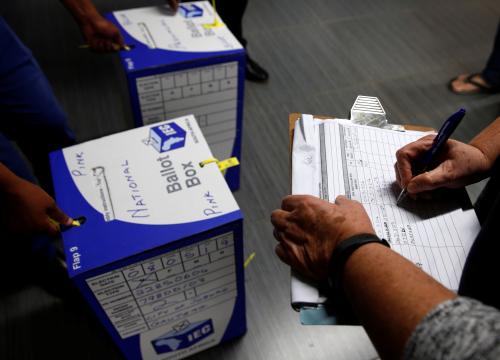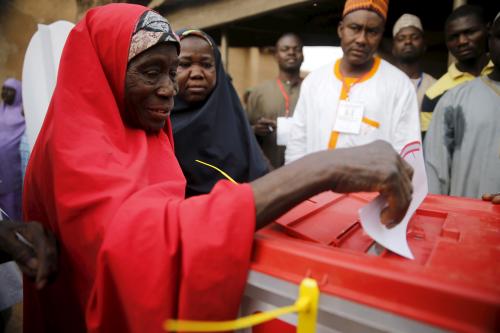Originally published in the Wall Street Journal under the title “Mr. Singh’s History Lesson.”
The media around the world has reported with some sense of amazement that Manmohan Singh is the first full-term Indian prime minister to be returned to power since 1962, and implied that this re-election gives Mr. Singh a mandate for economic reform. But a more meaningful historical parallel exists between his return and that of former Prime Minister Atal Bihari Vajpayee in 1999.
Just as intransigent communist parties held Mr. Singh’s fragile coalition government to ransom during his first term in office, the mercurial Jayaram Jayalalitha, the leader of a southern regional party, tried to scuttle every policy change Mr. Vajpayee initiated after coming to power in March 1998. Just as the current election has given Mr. Singh’s United Progressive Alliance a near-majority in parliament, the 1999 election returned Mr. Vajpayee’s National Democratic Alliance with a clear mandate.
No longer hostage to Ms. Jayalalitha’s antics and assured of a full five-year term, Mr. Vajpayee went on to systematically introduce deep economic reforms. India’s recent shift to 8% growth from the previous 6% growth rate owes much to those reforms. The million-dollar question now is whether the Singh government will implement economic reforms with the same vigor as the Vajpayee government. Going by media reports and the positive stock-market response last week to the election results, the answer would seem to be an unequivocal “yes.”
Yet one cannot but help detect some hesitation on the part of the Congress Party president Sonia Gandhi and her son, Rahul Gandhi, who hold a virtual veto over the future direction of Mr. Singh’s government. Mrs. Gandhi showed a clear preference for populist policies such as the National Rural Employment Guarantee Scheme over pro-growth economic reforms throughout the past five years and during the campaign. Mr. Gandhi reserved his applause for the multi-billion dollar debt relief package to farmers the Singh government announced more than a year ago. Simultaneously, he roundly criticized the Vajpayee-era reforms in election speeches, arguing they largely benefited the urban elite and corporations at the expense of the poor.
While virtually all economists and policy analysts would agree that the Gandhis display the right instincts when they place the interests of the poor above all else, it is doubtful that those interests can be promoted to the fullest without implementing serious economic reforms. The socialist policies of India’s first three decades following independence brought little relief to the poor, while the ad hoc liberalization of the 1980s followed by more systematic reforms subsequently have led to a significant cut in poverty rates.
To be sure, schemes such as the National Rural Employment Guarantee and debt relief can give immediate relief to the poor. But sustaining these programs on a large scale is difficult without rapidly accumulating national debt, which already stands at 80% of the national income. There is no substitute for sustained growth in both rural and urban India if poverty is to be eliminated for good. And this requires reforms both in the rural and urban sectors of the economy.
In the rural areas, the government must introduce reforms that make land leasing and land sales easier; facilitate contract farming; issue titles to land, thus turning it into an effective collateral; and free farmers everywhere to sell their produce to whomsoever they want. It must also speed up connecting villages to the nearest center of economic activity through all-weather roads so that rural people can turn their entrepreneurial talents into effective income.
Urban-area reforms are just as important as agricultural reform. The fate of the rural poor cannot rapidly improve unless reforms that accelerate growth in industry and services are put in place as well. Agriculture currently employs between one-half to three-fifths of the workforce but generates just one-sixth of India’s income. Even under the most optimistic scenario, agriculture cannot grow faster than 4% per year on a sustained basis. This growth rate is much too slow to speedily eliminate rural poverty.
If India is to transform into a modern economy, it must create well-paid jobs in industry and services to absorb a substantial proportion of the labor force currently employed in agriculture over the next two decades. Unfortunately, official statistics indicate that employment in the organized sector of the economy currently accounts for less than 10% of total work force. India’s unorganized sector can generate some well-paid jobs, but not nearly enough.
If the Gandhis and the Singh government truly wish to eliminate poverty and provide a decent living to Indian workers, focusing exclusively or even primarily on the rural sector simply will not do. The government must make the business environment attractive to large-scale, labor-intensive manufacturing firms and ensure that the rapidly rising service sector is not choked by a shortage of skilled labor. The former requires reform of key labor laws, while the latter requires wholesale reform of the higher education system. The government also must accelerate power sector reforms, build road networks and urgently create urban infrastructure.
Mr. Singh has a rare opportunity to push vital economic reforms ahead that could make poverty in India history. He must persuade the Gandhis that this is the right path for the country.



Commentary
Op-edWill the Singh Government Transform India Into a Modern Economy?
May 26, 2009